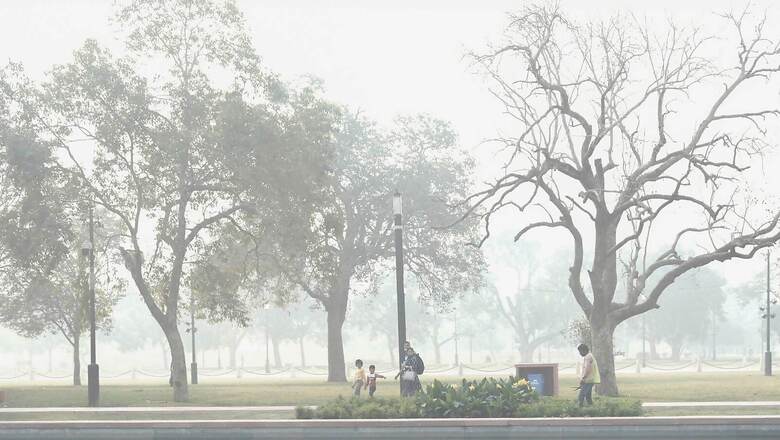
views
Delhi’s air quality plunged into deep red — ‘severe’ zone — by the hour on Tuesday, as fumes from peak crop stubble burning activity in neighbouring Punjab travelled to Delhi, while stable meteorological conditions allowed little dispersion.
The air quality is likely to remain in the severe category until Wednesday, after which some improvement is expected owing to winds picking up pace, said scientists and weather officials monitoring the situation.
As per the Central Pollution Control Board’s (CPCB) Sameer app, Delhi’s AQI was 435 in the ‘severe’ category at 1 pm and is likely to deteriorate further. This is a sharp spike from Monday’s average AQI reading of 392 (higher end of very poor).
Given the urgency of the situation, the Commission for Air Quality Management (CAQM) in Delhi-NCR will review the situation along with Delhi government in a meeting.
V K Soni, senior IMD scientist and CAQM member, said the air quality is likely to remain severe on Wednesday as well, but stage -IV measures of the Graded Response Action Plan (GRAP) will not be required to be implemented for now, as air quality is expected to start improving slightly from Thursday onwards.
“The wind direction will change to southeasterly, which will not have any farm fire pollutants as such, while it is also likely to increase the local wind speed. A Western Disturbance is likely to affect the northwest region, even though it will not impact Delhi-NCR, the wind direction will change on account of it, which so far was North-westerly. It won’t be an extended smog episode," said Soni.
He further explained that while smoke from farm fires is reaching Delhi, stable atmospheric conditions, including low temperatures and low wind speed trapped pollutants, are not allowing much dispersion as the mixing height on Monday was less than 500 metres, which means there was only little circulation in the air to disperse any pollutants.
On Tuesday afternoon, the mixing height was 1 km, which is slightly better. In summer, the mixing height is around 4 km and hence pollutants are not able to settle too close to the earth’s surface. This is why a dense layer of haze is clearly visible hanging in the skies.
Scientists explain that mixing height is similar to the ceiling of a room, if the ceiling comes down too much, it will cause suffocation and stuffiness. This is what happens when the mixing layers comes down to less than 1 km, it doesn’t allow the air to circulate and hence pollutants stay suspended in a thick layer.
Read all the Latest India News here




















Comments
0 comment